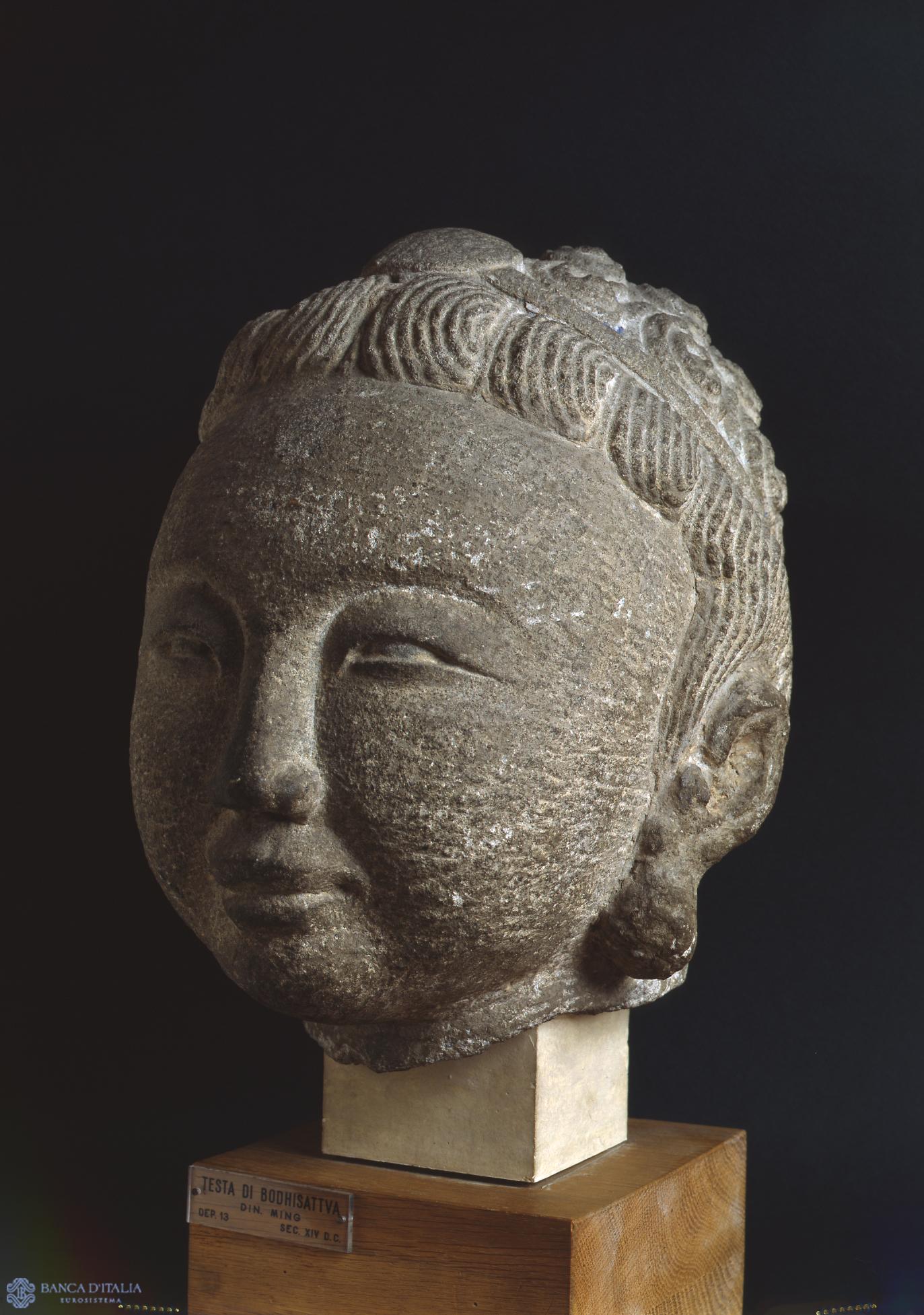The head, which bears traces of blue tint on the hair, is of uncertain date but was probably executed in the Ming period (16th and 17th centuries), when the aesthetic taste was evolving towards a preference for richer decoration. It has been described as a Buddha head, although it is more likely to be that of a young princely Bodhisattva. The face is wide, the cheeks round and the lips prominent; the eyes are small slits but their joyous expression illuminates the broad face. The high wide forehead, the cheeks and the chin form a compact round form. The fullness of the face is matched by the enlarged earlobes, which seem almost to swell into the earrings. The head is covered in thick curly hair gathered on the crown into a jewel with a large ornate clasp.
The piece has been said to reveal Asian influences (according to Lionello Venturi is it central Asian), although the experts have not yet agreed on an exact provenance.
Testa di Buddha o Bodhisattva
Head of Buddha or Bodhisattva
17th century AD
16th century AD
Sculpture
Religious

Date
16th - 17th century
Material and technique
Grey limestone
Measurements
27 x 21 x 28 cm
Compiler
Augusta Monferini
